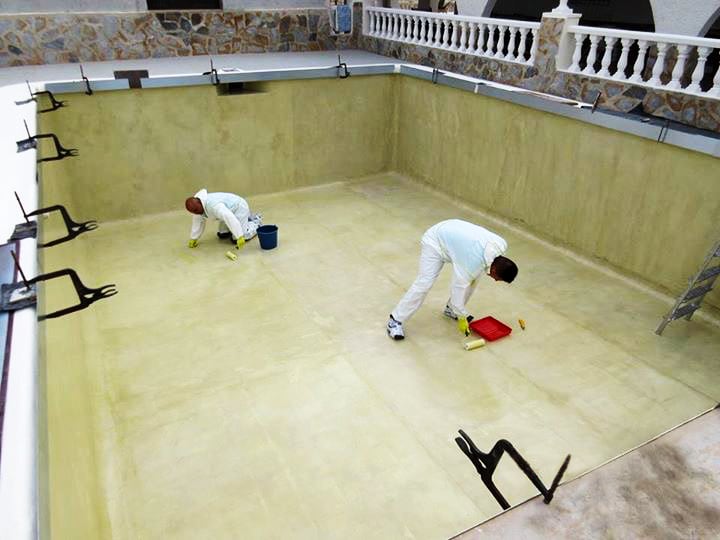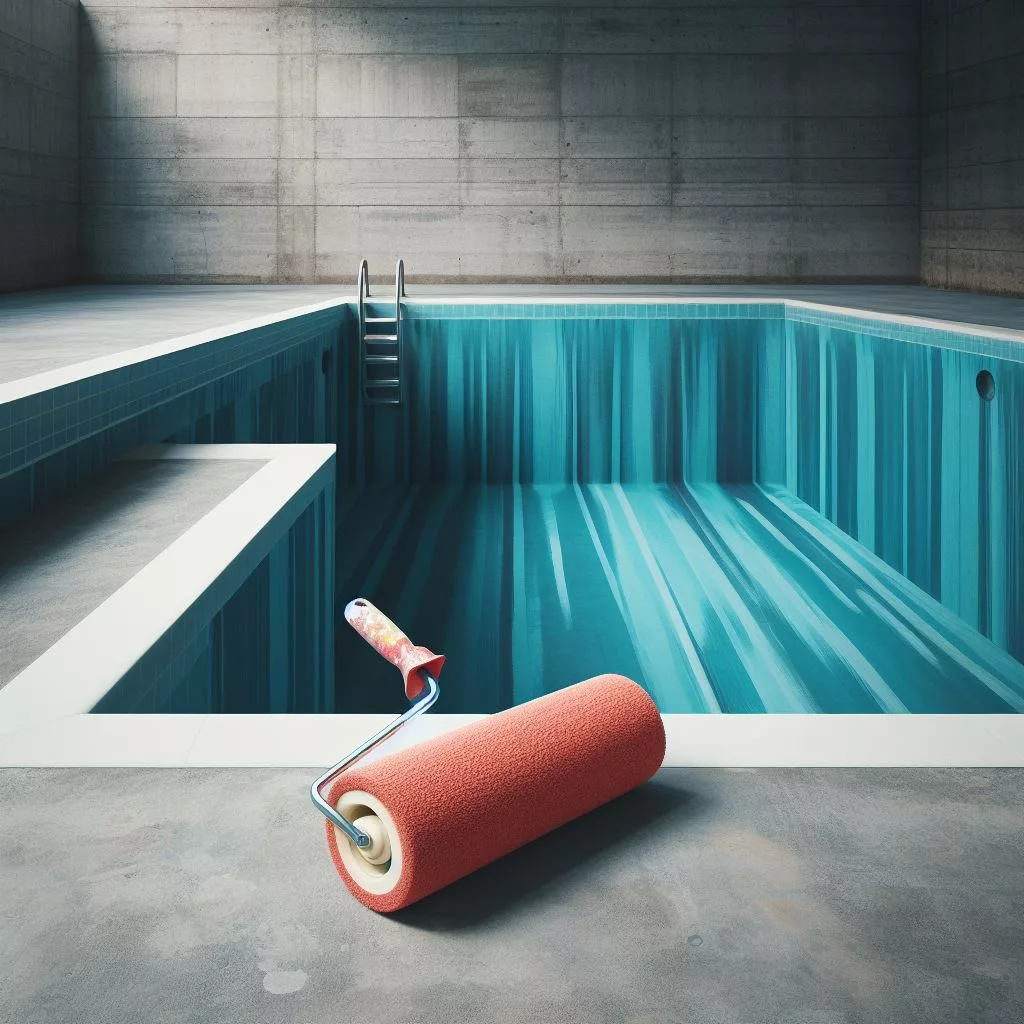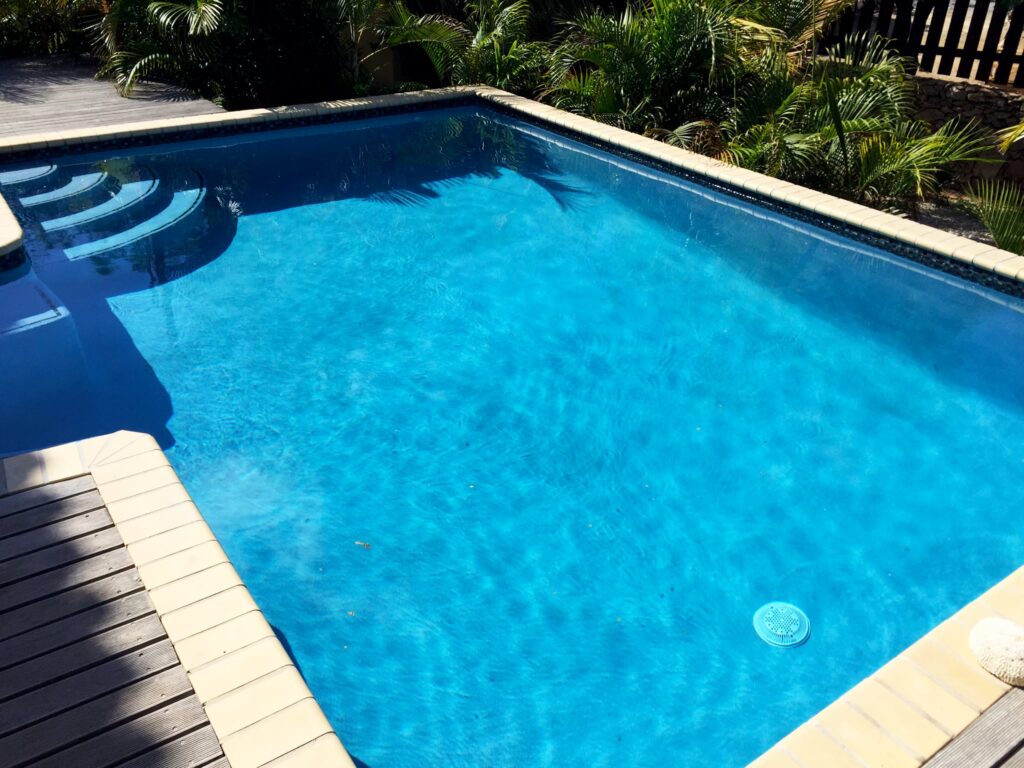
Introduction
Owning a concrete pool is a luxury that many homeowners enjoy, providing a refreshing oasis in the backyard. However, the wear and tear over the years can leave your pool looking tired and outdated. If you’ve been contemplating pool resurfacing, you’re in the right place. In this step-by-step guide, we’ll walk you through the process of DIY pool painting, allowing you to breathe new life into your concrete oasis without draining your wallet.
Is Painting a Concrete Pool a Good Idea?
The Benefits of DIY Pool Painting
Choosing to paint your concrete pool comes with a myriad of benefits. First and foremost is the initial cost. Traditional finishes like pool plaster or high performance coatings are more expensive initially. While they certainly have more benefits overall, they aren’t always the best choice for pool owners who are just looking for a quick fix. With the right paint and a bit of elbow grease, you can achieve a rejuvenated look at a fraction of the cost.
Customization at Your Fingertips
Painting your pool opens up a world of possibilities in terms of customization. With paint, you have the creative freedom to choose the color that suits your style and complements your outdoor space. It’s entirely up to you which direction you go with the color of your pool. Whether you want a classic look, or something more modern, you can create the style you like.
Considerations Before Taking the Plunge
While DIY pool painting offers some advantages, it’s crucial to consider the longevity and durability of the paint compared to other finishes. At ecoFINISH®, we supply cutting-edge flame-sprayed polymer coatings. These coatings give you more protection and durability than other finishes, and have numerous color options, all smooth to the touch. This is a superior option to pool paint, so it’s certainly something you should consider before committing to pool paint.

Preparing Your Concrete Pool for Repainting
So you’ve decided that you want to paint your pool. Now it’s time to prepare the canvas for your artistic endeavor. The success of your DIY pool painting project hinges on proper preparation, ensuring the paint adheres seamlessly and stands the test of time. Now we’ll go over the preparation stage.
Pressure Washing: Stripping Away the Years
Before reaching for the paintbrush, start by giving your pool a thorough cleaning with a pressure washer. This step is essential to remove dirt, algae, and any loose or peeling paint. The goal is to create a clean, smooth surface for the new paint to bond effectively. You want your end product to look as good as possible, so take the time to do this step correctly.
Acid Washing: Etching for Adhesion
In some cases, especially with older pools, you might need to take an extra step to ensure optimal adhesion. Acid washing helps etch the surface, providing a slightly rough texture that enhances the bond between the concrete and the paint. Be cautious when using acid, following safety guidelines, and wearing appropriate protective gear.
TSP Rinse: The Final Pre-Paint Cleanse
After pressure washing and acid washing, it’s crucial to rinse the pool thoroughly with a trisodium phosphate (TSP) solution. TSP helps neutralize any remaining acid and removes any lingering debris, ensuring a pristine surface for your upcoming paint job.
Surface Preparation: The Key to Longevity
Smooth out any rough spots and repair minor cracks or imperfections in the concrete. A well-prepared surface ensures the paint goes on evenly and extends the life of your DIY pool project.
With your pool now prepped and ready, the next section will guide you through the process of painting a concrete pool with acrylic paint, covering everything from choosing the right materials to the final brushstroke.
Tips and Recommendations for Successful Pool Painting
Coverage Matters
Achieving even coverage is essential for a professional-looking finish. Take your time during the application process, ensuring every nook and cranny is covered with the appropriate number of paint coats.
Explore Color Options
One of the advantages of DIY pool painting is the ability to choose a color that suits your taste. Consider the overall aesthetic of your outdoor space and pick a shade that complements the surroundings.
Paint Quantity Matters
Estimate the amount of paint you’ll need accurately. Running out of paint midway through the project can lead to color discrepancies, while excess paint may go to waste. Consult with the paint manufacturer or a knowledgeable professional to determine the right quantity.
Consider Surface Roughness
The texture of your pool surface can affect the appearance of the paint. Smooth out rough spots during the preparation phase, and if you desire a textured finish, select a paint designed for such surfaces.
In the next section, we’ll address common questions and concerns related to DIY pool painting.
FAQ
Can I Paint My Pool if It Has Structural Cracks?
Prior to painting, you should seal any structural flaws in your pool. Fixing structural cracks prevents moisture from entering the crack and escalating the damage that can cause uneven ground and injuries to people.
Can I Switch Back to Pool Plaster After Painting My Pool?
While it’s possible to revert to pool plaster, it’s a labor-intensive process that involves stripping the paint, preparing the surface, and applying the new finish. Consider the long-term commitment before deciding to switch back.

Is Pool Paint a Better Option than ecoFINISH?
The decision between ecoFINISH and pool paint is influenced by a number of variables, including longevity, cost, and personal preference. Although pool paint is typically less expensive up front, it will certainly require more frequent upkeep. ecoFINISH, on the other hand, is more expensive initially but offers enhanced protection, durability, and a beautiful smooth finish. The aquaBRIGHT™ finish was created specifically for concrete pools. Your choice should be in line with your priorities and the particular requirements of your pool. Seeking professional advice can offer insightful advice suited to your circumstances.
Conclusion
In conclusion, painting your concrete pool can be a rewarding DIY project that not only saves you money but also adds a personal touch to your outdoor space. With the right materials, thorough preparation, and careful application, you can achieve professional-looking results that stand the test of time.
Remember, a painted pool requires regular maintenance to prolong its lifespan. Stay on top of cleaning, balancing chemicals, and addressing any issues promptly to enjoy your revitalized pool for years to come.
Ready to give your pool a fresh new look? Follow our step-by-step guide, and don’t hesitate to contact our pool painting experts for personalized advice and recommendations.
External Links
For your convenience, click here for a list of reputable pool paint manufacturers or suppliers where you can find the necessary materials.
Additionally, explore more of our articles and resources about pool maintenance to keep your pool in pristine condition:
